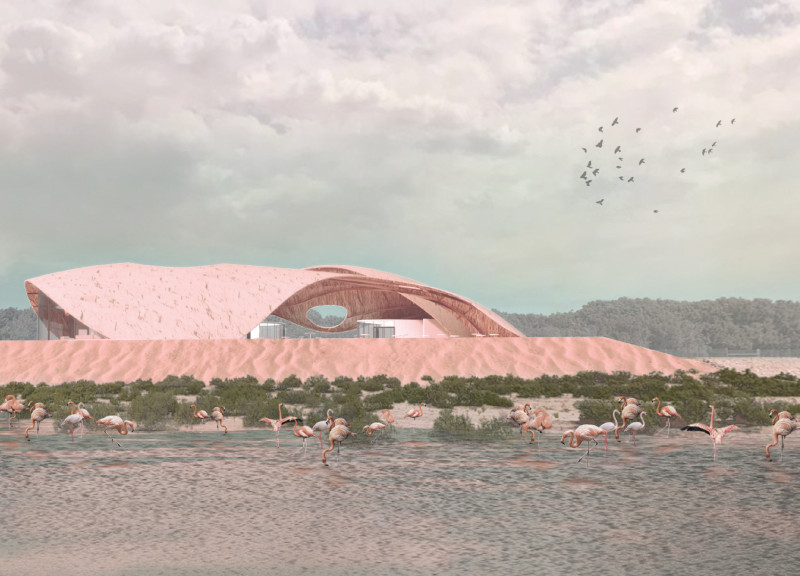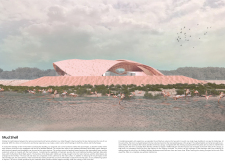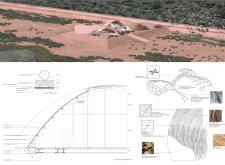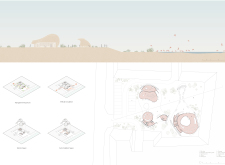5 key facts about this project
The visitor center located in Wathba Wetland serves as a place where people can engage with the local environment, especially the flamingo habitat. The design aims to merge human activity with the natural landscape. It creates a space for observation and learning, highlighting the importance of the wetlands. The overall concept focuses on balancing built structures and nature, showing consideration for the surrounding ecosystem while enhancing the visitor experience.
Design Approach
A key feature of the design is the use of curved surfaces that help reduce the building's visual impact. This strategy aligns the form of the structure with the natural contours of the sandbanks, allowing it to blend into its surroundings. The layout consists of two separate volumes that are connected by an inner courtyard, which serves as a space for planting. This arrangement helps to minimize the dominance of the building while also allowing for various human interactions in a harmonious setting.
Materials and Construction
The project makes significant choices regarding materials that address both appearance and function. A traditional bamboo-mud-wall construction method is referenced, with bamboo used as the primary structural element. A layer woven from bamboo leaves adds texture to the exterior. Additionally, a mixture of mud forms the outermost layer, which not only looks harmonious with the landscape but also aids in temperature control within the building.
Connection to Environment
Local resources play an important role in the design, particularly with the incorporation of date palm trees. The midribs provide strong support, while the dried leaves act as a surface interface, reflecting local building practices. Soil and straw from the area are compacted to create the outer surface, reinforcing the project’s focus on sustainability and use of local materials.
Visitor Experience
The central courtyard is essential to the design. It allows wetland plants to grow and provides shade for visitors. Careful attention has been paid to sightlines from the entrance to the viewing courtyard, allowing visitors to see flamingos upon arrival. This design choice encourages exploration and leads to open views of the ecosystem. The thoughtful connection between the building and the landscape reflects an appreciation for the natural surroundings, enhancing the overall experience for visitors.






















































